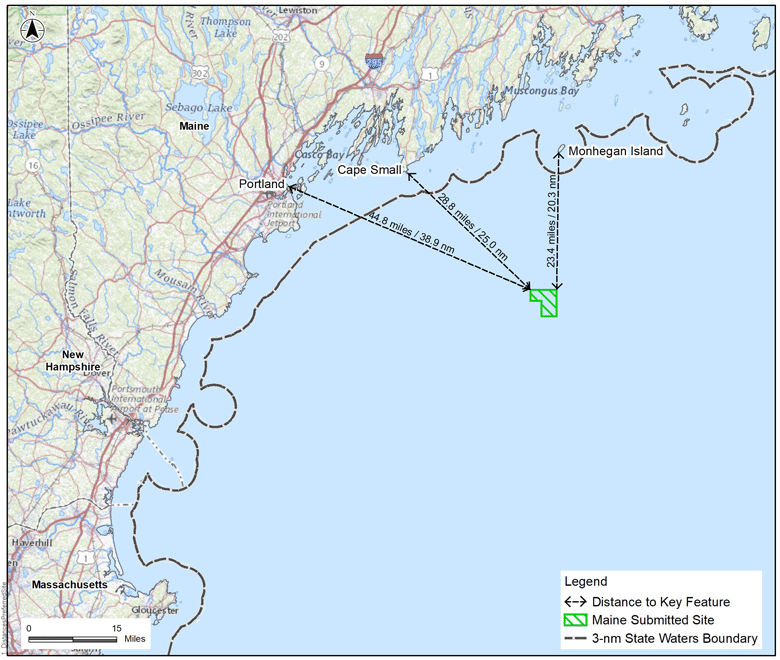The New England electric grid—ISO New England—has a website that includes a display featuring two pie charts that show where our electricity is coming from, updated in real time.
Right now, “renewables” are at 7% of our total energy mix.
Wind is 28% of that 7%, solar is 10% of that 7%, and the rest of the renewables come from burning wood, trash, and methane from dumps.
Hydro isn’t listed as renewable, natural gas and nuclear usually make up the lion’s share, with hydro running typically around averaging around 9%.
Then there are imports, which vary during the time of day and what the weather is like—wind and solar are very weather- and time-of-day- dependent.
If offshore wind industrialization is allowed in these fishing grounds the communities connected to these areas will suffer.
Many people today think that offshore wind power will be able to give us abundant (long-lived?) clean energy.
The water in the Gulf of Maine is very deep, any turbines sited there will be on floating platforms anchored to the seabed with giant chains. It is important to remember that the Gulf of Maine is the life blood of all our coastal fishing communities.
I participated in an interesting project some years ago when the Maine Coast Fishermen’s Association was formed. We worked with Island Institute to document how each fishing community extended far out to sea. Each community has traditional grounds that have been worked for centuries by fishermen from those communities. Fishing sustains coastal New England.
If offshore wind industrialization is allowed in these fishing grounds the communities connected to these areas will suffer.
Are you willing to take a map of the state of Maine and eliminate the fishing grounds for these fishermen? Just going somewhere else seems reasonable to some, usually people with no fishing experience, but it is much more complicated than that.
Pieces of the equipment like turbine blades will break off, the bottom will be jet-plowed to lay cables, and you will not be able to set your fishing gear in these areas ever again, or until the next glacial period pushes the steel, concrete, carbon fiber, and whatever else goes into the industrial power stations off the edge of the continental shelf after they break down.
Offshore substations that convert AC power to DC power will be continuously pumping 90-degree water into the ocean when the turbines are spinning.
And yet the premise for offshore wind is that it is clean energy, good for the environment, and it will help control the climate, so we don’t die from global warming.
Now go back to the ISO New England data and ask yourself: “How many offshore wind turbines will it take to raise the percentage of power for the New England grid to have a meaningful impact on emissions?”
Data gets presented about how many megawatts of power each turbine produces, so-called nameplate power. That number assumes that they function at 100% capacity all the time. Nameplate is used to predict how many homes will be powered by turbines. The truth is that they only produce on average just below 40% of the time, so any data about homes must take this into consideration.
The Gulf of Maine is a unique ecosystem, almost an inland sea, and incredibly productive. It is this productivity that sustains our coastal fishing communities. This productivity is driven by currents that originate in the Bay of Fundy and circulate throughout the Gulf of Maine unobstructed.
These currents have evolved over centuries, since the ice sheets retreated, and marine species depend on an unobstructed flow to live and reproduce as they have for centuries. Industrialization of our fishing grounds puts this at risk.
Maine should wait to develop other sources of power that won’t harm our fisheries and are robust enough to eliminate a substantial portion of our carbon emissions.
Offshore wind power is the wrong choice.
Glen Libby is a 45-year veteran of the commercial fishing industry and now runs Port Clyde Fresh Catch. He lives in Port Clyde.





